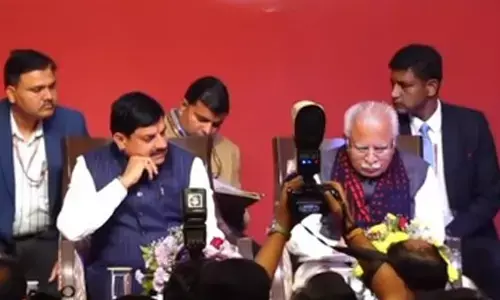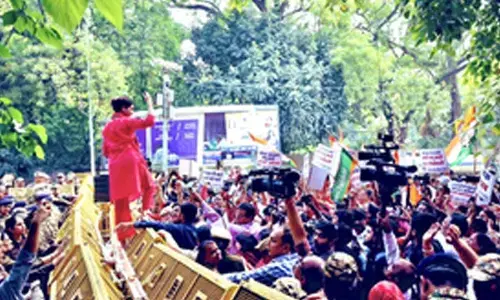Lessons from Wayanad tragedy

Who and what is responsible for the heart-breaking landslides that hit Wayanad district and took so many lives? This is what I had asked in my last column.
Who and what is responsible for the heart-breaking landslides that hit Wayanad district and took so many lives? This is what I had asked in my last column. The question is important even as weeks have passed and our attention has shifted to other devastating disasters. I had explained how climate change played a role in the disaster but not entirely. This already vulnerable region of the Western Ghats had been made more prone to disasters because of human activities. But then the other question, which frankly haunts me, is: Why do people who live in these fragile regions end up opposing conservation efforts? They know that they are cutting that proverbial tree branch that they are sitting on! So, what can be done?
Let’s first understand the developmental activities in Wayanad. My colleagues Rohini Krishnamurthy and Pulaha Roy have investigated this and found that this disaster was waiting to happen. The landslide occurred near Mundakkai, a ward of Vellerimala village. I am pointing this out because this village was identified as an ecologically sensitive area in the 2013 report by the K Kasturirangan committee. I was a member of this committee, set up by the Union environment ministry to come up with an “all-round and holistic approach for sustainable and equitable development” for the Western Ghats. It recommended that all such villages where over 20 per cent of the area was ecologically sensitive should have strict controls on developmental activities that would make the area more vulnerable. This is why it recommended against allowing destructive activities, in particular mining and stone quarries, in these areas.
In November 2013, the ministry accepted this report and issued a directive under Section 5 of the Environment Protection Act, demarcating a large area (60,000 sq km) as ecologically sensitive and banning certain activities, including mining and stone quarrying. However, Kerala asked for an amendment, citing the finding of its own committee which had argued that an entire village could not be demarcated as ecologically sensitive as it had other activities that should not be stopped.
Now look at the implications of this. Pulaha superimposed the satellite imagery of quarrying sites in Wayanad on the map of the 13 villages identified by the Kasturirangan report for protection as ecologically sensitive areas. He found 15 quarrying sites across these 13 villages. One village, Noolpuzha, has six quarrying sites, all in the area demarcated as forest. And it gets worse. Rohini found to her horror that in 2017, Kerala amended its minor mineral concession rules and permitted the use of explosives anywhere beyond 50 metres of a residential building or in forest land or hill slopes. This literally means blasting in one’s backyard and creating conditions to destablise the hills. Why are we then surprised that when extreme rain hits the region, it leaves behind this scale of devastation? Wayanad landslide is a humanmade disaster.
The question is, what do we do? In these areas, people are against protection as laid down by first the Madhav Gadgil committee and then the Kasturirangan committee. I saw this when I travelled through the region. People were out on the streets shouting slogans against policies that would promote conservation. You may argue that they are swayed by vested interests. But the fact is, they believed that if the region was declared ecologically sensitive, governments would take over their plantations; there would be restrictions on the way they practised agriculture. It was partly because of the way we have done conservation through fiats and committees, but also because banning certain activities like quarrying would mean loss of livelihoods for them.
We must keep these in mind while drafting our future policies. We have to change the way we manage our environment because of climate risks, and if we want to succeed in this, we will have to change the way we practice conservation. Currently, it is about what cannot be done—it is based on the premise that people are the biotic pressure and so activities detrimental to the ecology must be banned. This may be right, but it is also a fact that in India, our forests and other ecologically sensitive areas are the habitats of people—not just wilderness areas. To protect these areas, we need conservation that is inclusive and provides communities with tangible incentives to be partners in the efforts. This is why the Kasturirangan report recommended a green growth package for villages demarcated as ecologically sensitive – from debt for nature swaps to payment of ecological services where trees could not be cut or destructive development needed to be banned. People would get paid for conservation. But it is also important that we evolve development strategies built on green livelihoods – from sustainable plantations of coffee or tea to eco-tourism. We need to learn how to do conservation in people’s lands and with their involvement. In this age of climate change, the lessons from Wayanad are clear: learn and change, or perish.
(Writer is Director General of CSE and editor of Down To Earth, an environmentalist who pushes for changes in policies,
practices and mindsets;
(Courtesy: https://www.downtoearth.org.in/)
















